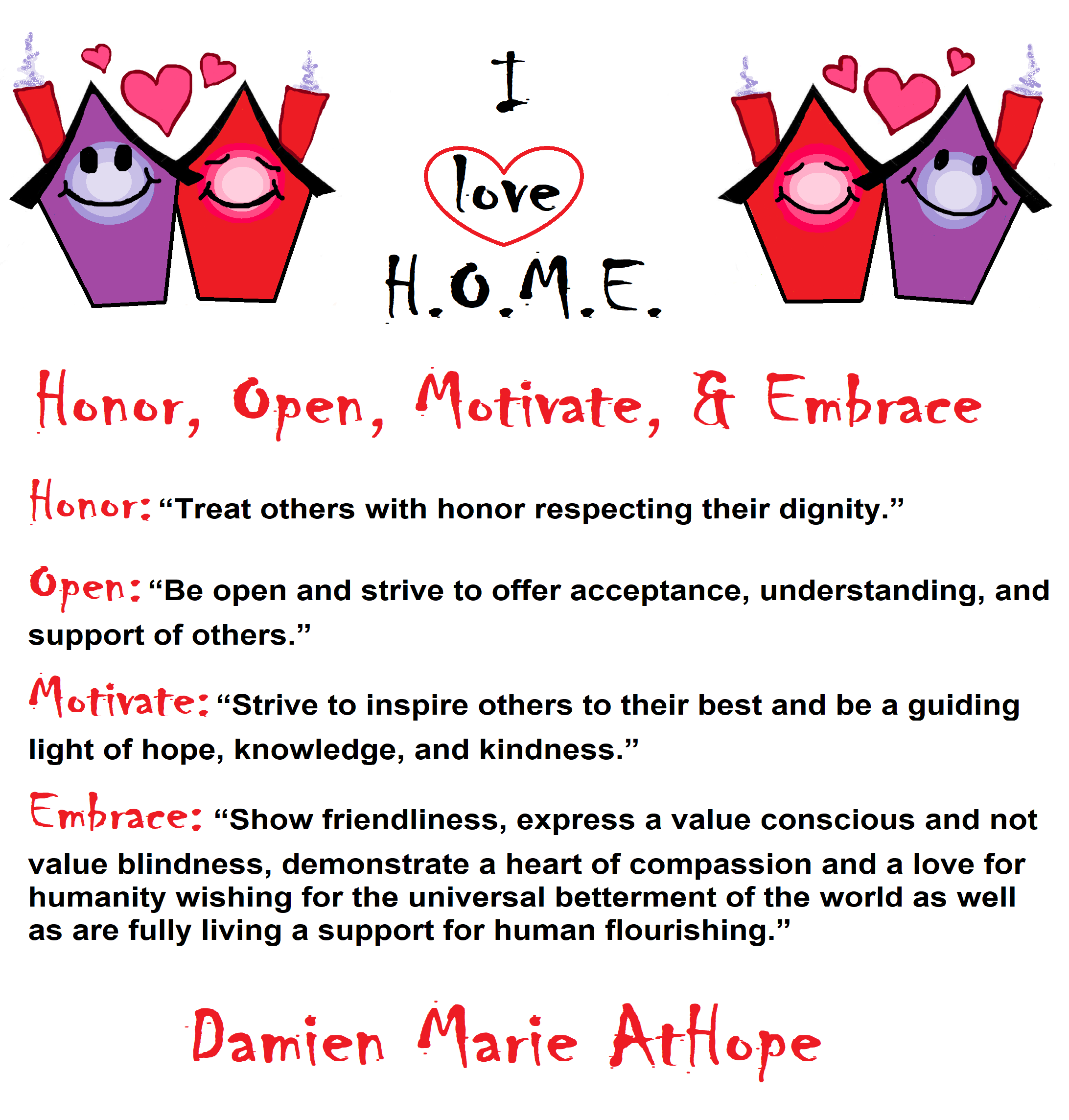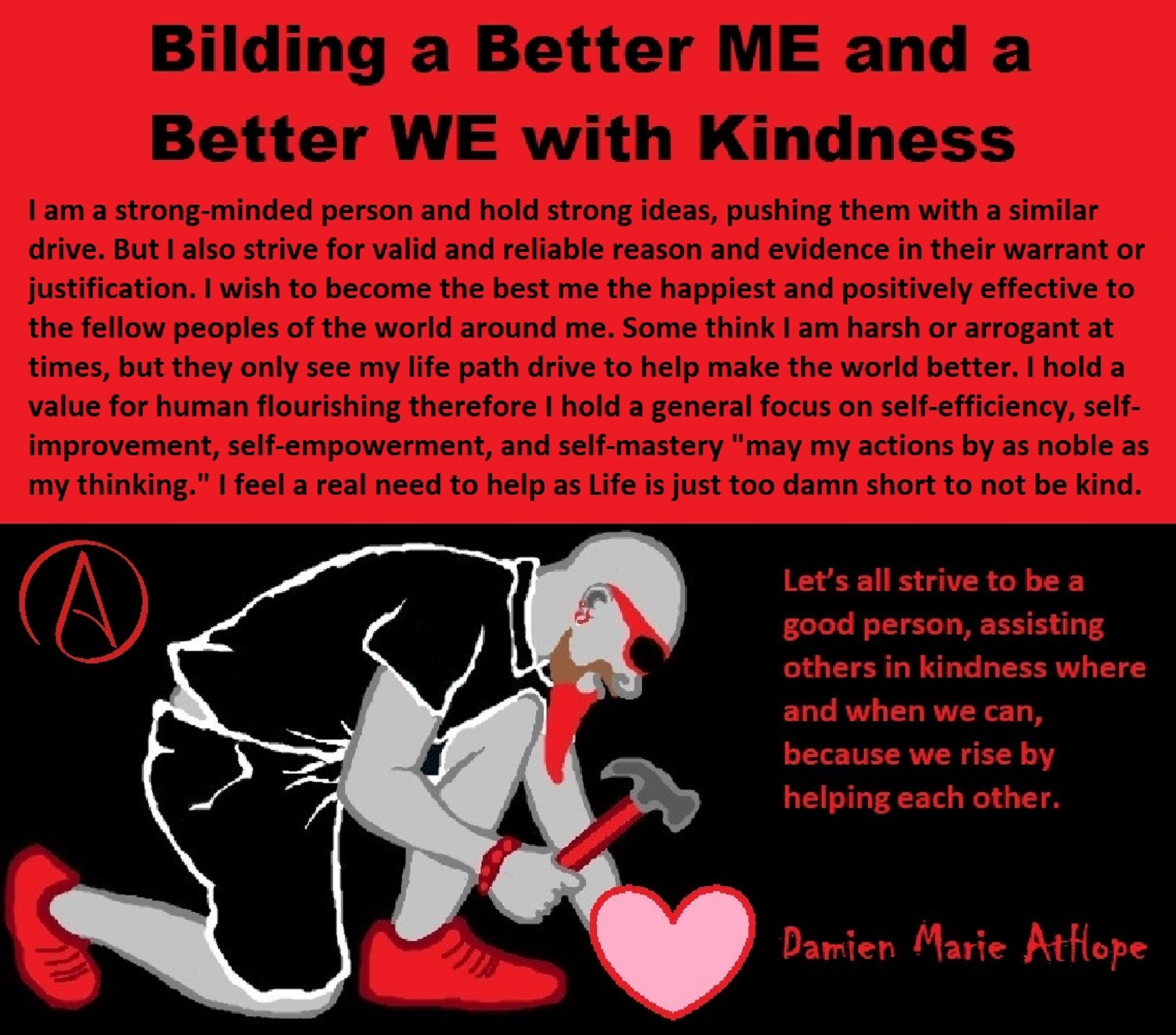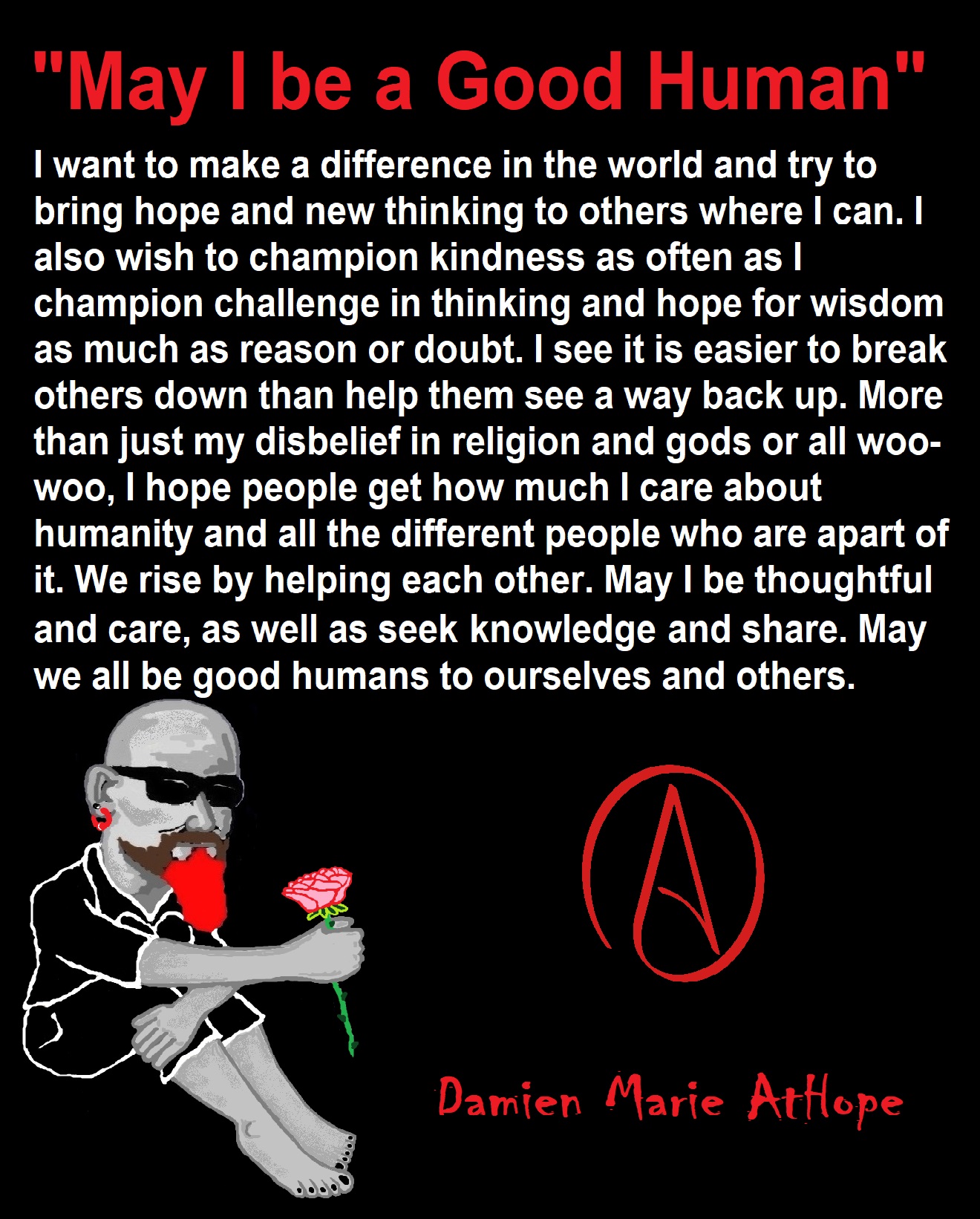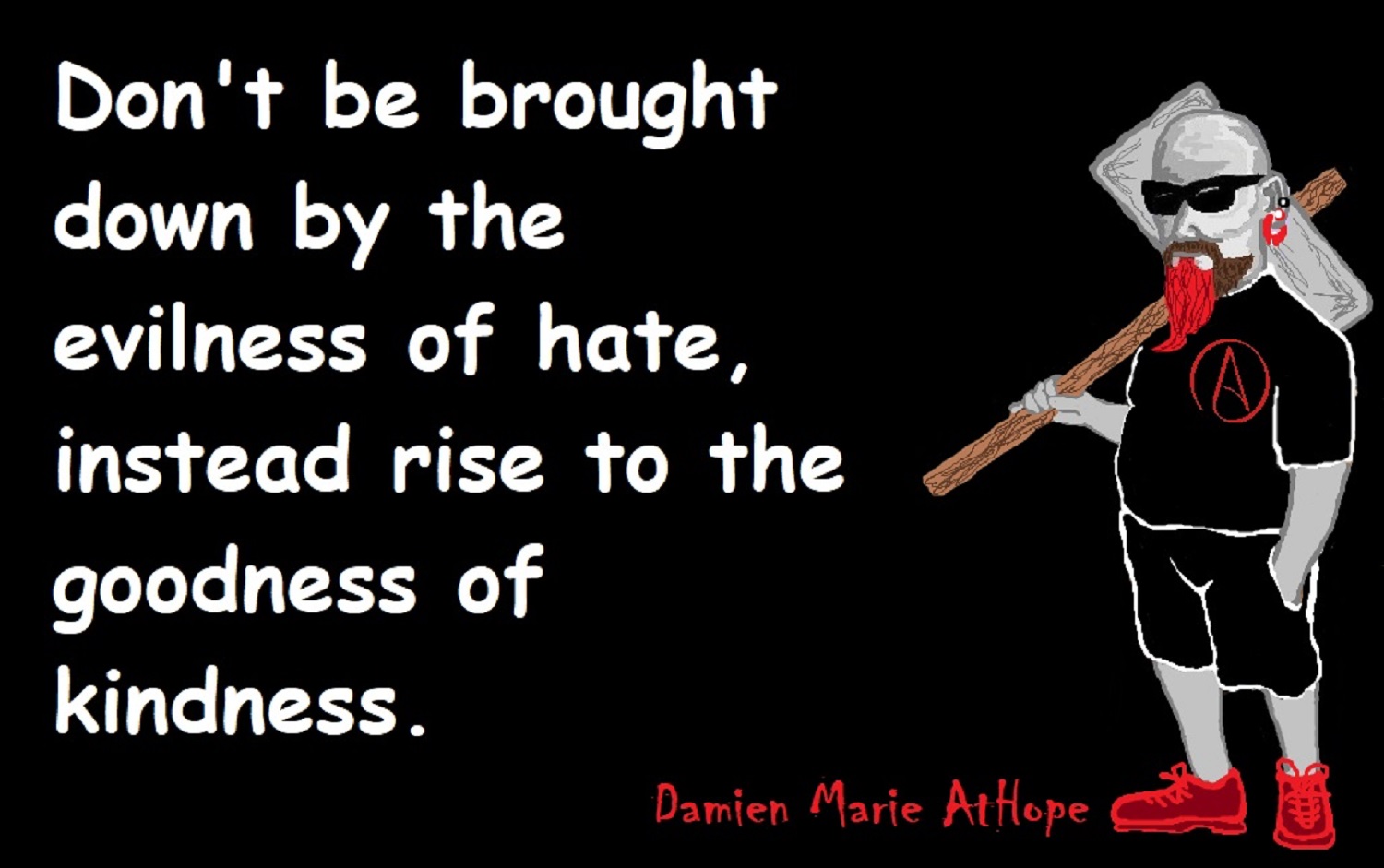Realistic and Unrealistic Hope?
Hopefully for a Brighter Humanity
Here is why my name is: “Damien Marie AtHope”
“Taste Your Emotions” Book By Damien Marie AtHope
The power of hope?
“Hope”
Now I understand,
I see out of the dark shadows, I have come.
I now know, that shame, and blame run hand in hand.
And they will topple even the tallest man.
It’s all me, not them?
I see forgiveness is the way.
It brings a new day.
I even need to forgive myself,
for what I have said and done.
I know I am not the only one.
I want to set my sights on Hope’s bright lights.
All will turn out,
I hope?
Hope is not the same as prayer
On the Nature of Value (axiology)
What would be your response to the idea that hope is the most evil of emotions because it serves, primarily, to extend one’s pain? This is a beautiful but, it seems, idealized view.
My response, Interesting, I would first ask, “So you have absolute proof or is it a hope that you have real knowledge?”
Just basing my idea on what I see. When one has only hope, it is generally because facts don’t support what one desires as the most likely (or even a likely) outcome. I wouldn’t say that hope is entirely without merit but without something real to support that hope, it is likely to turn to disappointment. Hope is most often seen when someone’s plans are shaky or unreasonable or when reality suggests a different outcome as the more likely to occur.
My response, So am I right, you are making the global claim that no form of hope is rational and no hope is built on anything but none empirical, really??? In this study the hope and optimism constructs and their unique variances in predicting life satisfaction where explored. The subscales (Agency and Pathways) of the Adult Hope Scale (Snyder, Harris et al., 1991) and optimism and pessimism as measured by the Life Orientation Test-Revised (LOT-R; Scheier, Carver, & Bridges, 1994) were compared in terms of ability to predict life satisfaction as measured by the domain-specific Quality of Life Inventory (QOLI®; Frisch, 1994; Study 1, N = 331) and the global measure Satisfaction with Life Scale (Diener, Emmons, Larsen, & Griffin, 1985; Study 2, N = 215). The Agency subscale of the Adult Hope Scale was the better predictor of life satisfaction in both studies. http://www.thepositivepsychologypeople.com/hope-research/
No global claim was made: that’s why I use words like “generally” and “likely.” What I’m saying is that hope is most usually predicated on a knowledge that things won’t turn out the way one wants them to but the person hoping is expressing their strong desire for their preferred outcome. This is not to say that hope has no purpose, but that we need to be aware of the danger of trusting too much in hope lest we spend much of our time disappointed.
My response, Science is on the side of hope. Snyder and his colleagues came up with a way of measuring hope, both as a stable trait of an individual and as a state one can be in anytime. The Hope Scale, which has been translated into more than 20 languages, includes items relating to agency (e.g., “I energetically pursue my goals”), and pathways (e.g., “There are lots of ways around any problem”). Whether measured as a trait or a sate, hope is related to positive outcomes. In one study, researchers looked at the impact of hope on college academic achievement over the course of 6 years. Hope was related to a higher GPA 6 years later, even after taking into account the original GPA and ACT entrance examination scores of the participants. High hope students (relative to low hope students) were also more likely to have graduated and were less likely to be dismissed from school due to bad grades. In more recent research, Liz Day and her colleagues found that hope was related to academic achievement above and beyond IQ, divergent thinking (the ability to generate a lot of ideas), and Conscientiousness. In that study, trait was measured as a trait. Interestingly, Rebecca Görres at University College Utrecht found that situational hope, but not dispositional hope, was related to divergent thinking. In her study, participants who were instructed to think hopefully were better at making remote associations, generated a higher quantity of ideas, and added more details to their ideas, compared to those who weren’t instructed to think hopefully. This link between hope and divergent thinking makes sense, considering divergent thinkers are good at coming up with lots of different ideas and hope involves coming up with a number of different strategies for obtaining a goal. In terms of practical implications, Görres notes: “It seems that performance can be enhanced in the short term by reminding people that they have the motivation and the means to pursue a goal. This “situational hope” could potentially be useful in the future as a means of short-term intervention to enhance performance. By reminding people before tests or situations in which performance and achievement are required that they have the will and the ways to do well, possible potential can be better utilized.” In another recent study, researchers looked at the role of hope among athletes. Athletes had higher levels of hope than non-athletes. Hope also predicted semester GPA over overall GPA and overall self-worth. Among female cross-country athletes in particular, the state of having hope predicted athletic outcomes beyond training, self-esteem, confidence, and mood. Hope can be distinguished from other psychological vehicles, such as self-efficacy and optimism. Self-efficacy refers to your belief that you can master a domain. Optimism refers to a general expectation that it’ll all just ‘be alright’. Hope, self-efficacy, and optimism are all incredibly important expectancies and contribute to the attainment of goals. Even though they all involve expectations about the future, they are subtly, and importantly, different from each other. People with self-efficacy expect that they will master a domain. Optimism involves a positive expectancy for future outcomes without regard for one’s personal control over the outcome. In contrast to both self-efficacy and optimism, people with hope have both the will and the pathways and strategies necessary to achieve their goals. So how does hope stack up against other vehicles of success? Philip R. Magaletta and J.M. Oliver measured hope, self-efficacy, and optimism and found that hope stood head and shoulders above the other vehicles. They also found specific effects: the will component of hope predicted well-being independent of self-efficacy, and the ways component of hope predicted well-being independent of optimism. In another study, which is hot-off-the-press, Kevin Rand and his colleagues found that hope, but not optimism, predicted grades in law school above and beyond LSAT scores and undergraduate grades. Interestingly, LSAT scores were not even a significant predictor of law school GPA. Seems like if you want to predict law school performance, a 12-item measure of Hope is more predictive than looking at a person’s LSAT scores! Additionally, both hope and optimism uniquely predicted greater life satisfaction at the end of the first semester. https://www.psychologytoday.com/…/the-will-and-ways-hope
Unrealistic hope, in contrast to the above, it is a passive wish which may cause despair. It may be fantasy and carries with it negative feelings. Even with perseverance and will, the failure to acknowledge realistic properties means frustration, disappointment and possible anger. It is different from pessimism, which is more of a natural disposition to believe that things will turn out badly. Hence, the expectancy of fulfillment is constantly thwarted. It involves a failure to clearly assess what can be changed and what cannot be changed. Obvious examples can be found in individuals imprisoned by social conventions. Because of the negative thoughts engendered, unrealistic hope leads to a failure to try possibilities and opportunities to restore hope which is realistic. Unrealistic hope leads to a feeling of despondency and a loss of meaning in life. Whilst hope is a normal feeling to look into the future, hopelessness – which is different, though carrying the feeling of loss of meaning and purpose – is not normal. When things are bad, it is believed that this situation will stay the same forever. Hope is important in palliative care, particularly as people are very ill and moving towards the end of life. Webster’s definition3 of hope offers two competing interpretations: one is of trust and reliance, which implies faith and dependence, as well as the belief that whatever the outcome, it will be for the best. This trust and reliance protects the person from loneliness and the feeling of being abandoned. The physician’s presence and caring engenders hope. Terminally ill patients have defined hope as an inner power directed forward towards the enrichment of being. The other interpretation is a desire accompanied by expectation or a belief in fulfillment. Here, what separates hope from desire is the expectation of fulfillment which may be rational, but not necessarily so. But if hope is truly embodied in expectation, it creates miracles defying physicians’ distrust in the light of realistic data. Hope is like a personal cheerleader in the game of life. There are many examples in medicine. One case described to me by a doctor was of a patient suffering from a rare, very serious cancer, who was given six months to live by the oncologist. When the patient asked his GP whether he knew of any alternative treatment, the latter conceded that whilst he did not know of any, this did not mean that no alternative treatment existed. This gave the patient the resolve he needed and he said, ‘Well, I am going to find something.’ In fact, he found some alternative medical treatment and he came back full of confidence and hope. He survived for another three years. Finally, research by Breitbart and Heller4 on terminally ill patients and meaning-centered psychotherapy found that depression, psychosocial factors and financial problems, concern about being a burden and hopelessness were very important factors. Seeing no meaning or value in living hastened their wish to die. In fact, spiritual wellbeing, in particular, loss of meaning, are vital factors in despair. The importance of a sense of meaning and purpose is a vital component of the human experience. It gives a sense of well-being, of peace and contentment and facilitates a self-transcendence and connectedness with others who matter to us and something greater than oneself. It helps us to maintain our dignity, honor and esteem. For some people, it is expressed in a religious context, but to others, by traditional medical and mental care providers. This research concluded that meaning-centered intervention increased spiritual well-being and a sense of meaning, reducing hopelessness and a desire for death. A sense of meaning and purpose has also been described in Man’s Search for Meaning by the psychiatrist Viktor Frankl,5 who survived in a concentration camp. https://www.ncbi.nlm.nih.gov/pmc/articles/PMC2500241/
SCIENCE WATCH
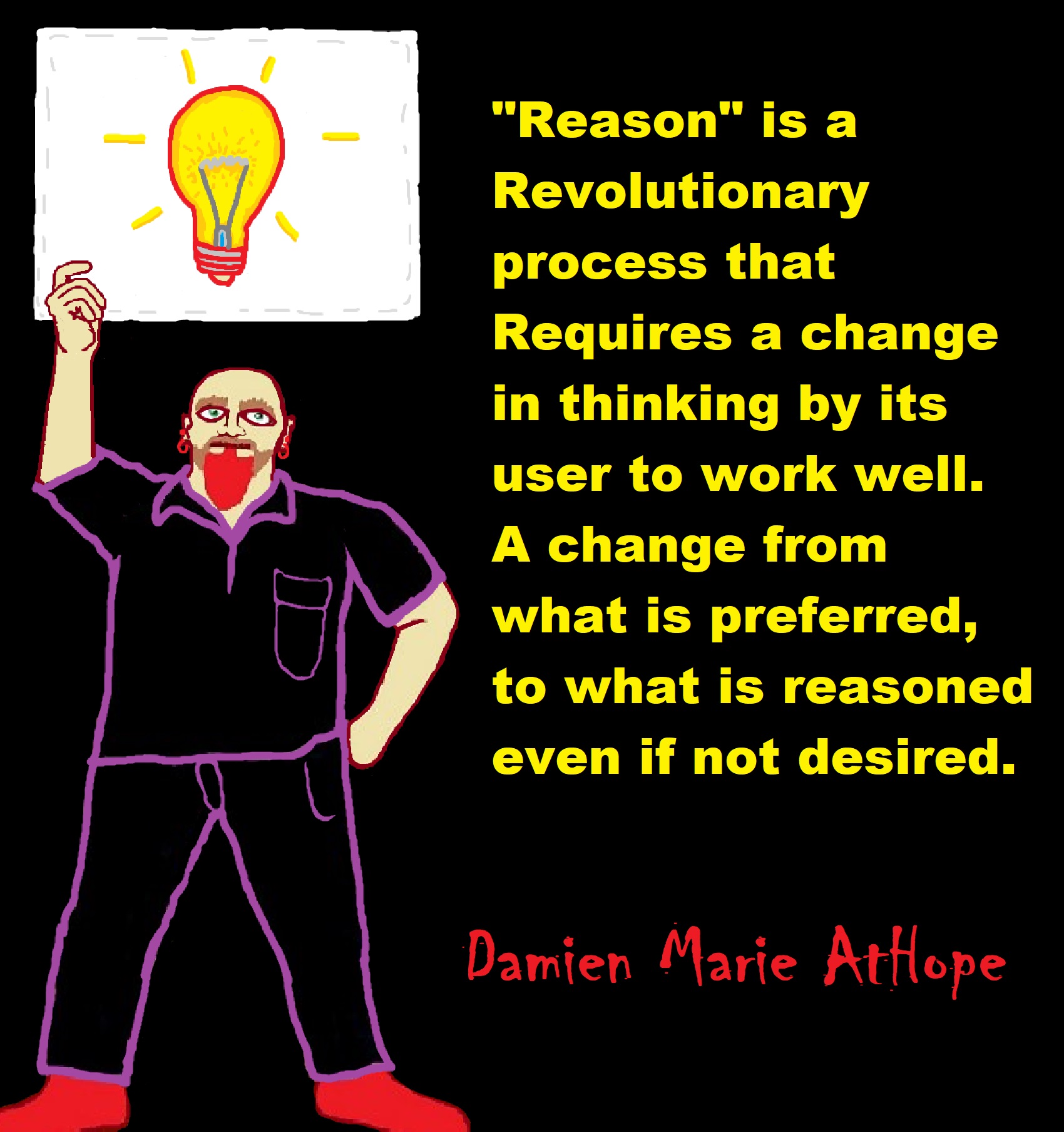


While hallucinogens are associated with shamanism, it is alcohol that is associated with paganism.
The Atheist-Humanist-Leftist Revolutionaries Shows in the prehistory series:
Show two: Pre-animism 300,000 years old and animism 100,000 years old: related to “Anarchism and Socialism”
Show tree: Totemism 50,000 years old: related to “Anarchism and Socialism”
Show four: Shamanism 30,000 years old: related to “Anarchism and Socialism”
Show five: Paganism 12,000 years old: related to “Anarchism and Socialism”
Show six: Emergence of hierarchy, sexism, slavery, and the new male god dominance: Paganism 7,000-5,000 years old: related to “Anarchism and Socialism” (Capitalism) (World War 0) Elite and their slaves!
Prehistory: related to “Anarchism and Socialism” the division of labor, power, rights, and recourses: VIDEO
Pre-animism 300,000 years old and animism 100,000 years old: related to “Anarchism and Socialism”: VIDEO
Totemism 50,000 years old: related to “Anarchism and Socialism”: VIDEO
Shamanism 30,000 years old: related to “Anarchism and Socialism”: VIDEO
Paganism 12,000 years old: related to “Anarchism and Socialism” (Pre-Capitalism): VIDEO
Paganism 7,000-5,000 years old: related to “Anarchism and Socialism” (Capitalism) (World War 0) Elite and their slaves: VIEDO
Paganism 5,000 years old: progressed organized religion and the state: related to “Anarchism and Socialism” (Kings and the Rise of the State): VIEDO
Paganism 4,000 years old: related to “Anarchism and Socialism” (First Moralistic gods, then the Origin time of Monotheism): VIEDO
I do not hate simply because I challenge and expose myths or lies any more than others being thought of as loving simply because of the protection and hiding from challenge their favored myths or lies.
The truth is best championed in the sunlight of challenge.
An archaeologist once said to me “Damien religion and culture are very different”
My response, So are you saying that was always that way, such as would you say Native Americans’ cultures are separate from their religions? And do you think it always was the way you believe?
I had said that religion was a cultural product. That is still how I see it and there are other archaeologists that think close to me as well. Gods too are the myths of cultures that did not understand science or the world around them, seeing magic/supernatural everywhere.
I personally think there is a goddess and not enough evidence to support a male god at Çatalhöyük but if there was both a male and female god and goddess then I know the kind of gods they were like Proto-Indo-European mythology.
This series idea was addressed in, Anarchist Teaching as Free Public Education or Free Education in the Public: VIDEO
Our 12 video series: Organized Oppression: Mesopotamian State Force and the Politics of power (9,000-4,000 years ago), is adapted from: The Complete and Concise History of the Sumerians and Early Bronze Age Mesopotamia (7000-2000 BC): https://www.youtube.com/watch?v=szFjxmY7jQA by “History with Cy“
Show #1: Mesopotamian State Force and the Politics of Power (Samarra, Halaf, Ubaid)
Show #2: Mesopotamian State Force and the Politics of Power
Show #3: Mesopotamian State Force and the Politics of Power (Uruk and the First Cities)
Show #4: Mesopotamian State Force and the Politics of Power (First Kings)
Show #5: Mesopotamian State Force and the Politics of Power (Early Dynastic Period)
Show #6: Mesopotamian State Force and the Politics of Power
Show #7: Mesopotamian State Force and the Politics of Power (Sargon and Akkadian Rule)
Show #9: Mesopotamian State Force and the Politics of Power (Gudea of Lagash and Utu-hegal)
Show #12: Mesopotamian State Force and the Politics of Power (Aftermath and Legacy of Sumer)

The “Atheist-Humanist-Leftist Revolutionaries”
Cory Johnston ☭ Ⓐ Atheist Leftist @Skepticallefty & I (Damien Marie AtHope) @AthopeMarie (my YouTube & related blog) are working jointly in atheist, antitheist, antireligionist, antifascist, anarchist, socialist, and humanist endeavors in our videos together, generally, every other Saturday.
Why Does Power Bring Responsibility?
Think, how often is it the powerless that start wars, oppress others, or commit genocide? So, I guess the question is to us all, to ask, how can power not carry responsibility in a humanity concept? I know I see the deep ethical responsibility that if there is power their must be a humanistic responsibility of ethical and empathic stewardship of that power. Will I be brave enough to be kind? Will I possess enough courage to be compassionate? Will my valor reach its height of empathy? I as everyone, earns our justified respect by our actions, that are good, ethical, just, protecting, and kind. Do I have enough self-respect to put my love for humanity’s flushing, over being brought down by some of its bad actors? May we all be the ones doing good actions in the world, to help human flourishing.
I create the world I want to live in, striving for flourishing. Which is not a place but a positive potential involvement and promotion; a life of humanist goal precision. To master oneself, also means mastering positive prosocial behaviors needed for human flourishing. I may have lost a god myth as an atheist, but I am happy to tell you, my friend, it is exactly because of that, leaving the mental terrorizer, god belief, that I truly regained my connected ethical as well as kind humanity.
Cory and I will talk about prehistory and theism, addressing the relevance to atheism, anarchism, and socialism.
At the same time as the rise of the male god, 7,000 years ago, there was also the very time there was the rise of violence, war, and clans to kingdoms, then empires, then states. It is all connected back to 7,000 years ago, and it moved across the world.
Cory Johnston: https://damienmarieathope.com/2021/04/cory-johnston-mind-of-a-skeptical-leftist/?v=32aec8db952d
The Mind of a Skeptical Leftist (YouTube)
Cory Johnston: Mind of a Skeptical Leftist @Skepticallefty
The Mind of a Skeptical Leftist By Cory Johnston: “Promoting critical thinking, social justice, and left-wing politics by covering current events and talking to a variety of people. Cory Johnston has been thoughtfully talking to people and attempting to promote critical thinking, social justice, and left-wing politics.” http://anchor.fm/skepticalleft
Cory needs our support. We rise by helping each other.
Cory Johnston ☭ Ⓐ @Skepticallefty Evidence-based atheist leftist (he/him) Producer, host, and co-host of 4 podcasts @skeptarchy @skpoliticspod and @AthopeMarie
Damien Marie AtHope (“At Hope”) Axiological Atheist, Anti-theist, Anti-religionist, Secular Humanist. Rationalist, Writer, Artist, Poet, Philosopher, Advocate, Activist, Psychology, and Armchair Archaeology/Anthropology/Historian.
Damien is interested in: Freedom, Liberty, Justice, Equality, Ethics, Humanism, Science, Atheism, Antiteism, Antireligionism, Ignosticism, Left-Libertarianism, Anarchism, Socialism, Mutualism, Axiology, Metaphysics, LGBTQI, Philosophy, Advocacy, Activism, Mental Health, Psychology, Archaeology, Social Work, Sexual Rights, Marriage Rights, Woman’s Rights, Gender Rights, Child Rights, Secular Rights, Race Equality, Ageism/Disability Equality, Etc. And a far-leftist, “Anarcho-Humanist.”
I am not a good fit in the atheist movement that is mostly pro-capitalist, I am anti-capitalist. Mostly pro-skeptic, I am a rationalist not valuing skepticism. Mostly pro-agnostic, I am anti-agnostic. Mostly limited to anti-Abrahamic religions, I am an anti-religionist.
To me, the “male god” seems to have either emerged or become prominent around 7,000 years ago, whereas the now favored monotheism “male god” is more like 4,000 years ago or so. To me, the “female goddess” seems to have either emerged or become prominent around 11,000-10,000 years ago or so, losing the majority of its once prominence around 2,000 years ago due largely to the now favored monotheism “male god” that grow in prominence after 4,000 years ago or so.
My Thought on the Evolution of Gods?
Animal protector deities from old totems/spirit animal beliefs come first to me, 13,000/12,000 years ago, then women as deities 11,000/10,000 years ago, then male gods around 7,000/8,000 years ago. Moralistic gods around 5,000/4,000 years ago, and monotheistic gods around 4,000/3,000 years ago.

Damien Marie AtHope (Said as “At” “Hope”)/(Autodidact Polymath but not good at math):
Axiological Atheist, Anti-theist, Anti-religionist, Secular Humanist, Rationalist, Writer, Artist, Jeweler, Poet, “autodidact” Philosopher, schooled in Psychology, and “autodidact” Armchair Archaeology/Anthropology/Pre-Historian (Knowledgeable in the range of: 1 million to 5,000/4,000 years ago). I am an anarchist socialist politically. Reasons for or Types of Atheism
My Website, My Blog, & Short-writing or Quotes, My YouTube, Twitter: @AthopeMarie, and My Email: damien.marie.athope@gmail.com



